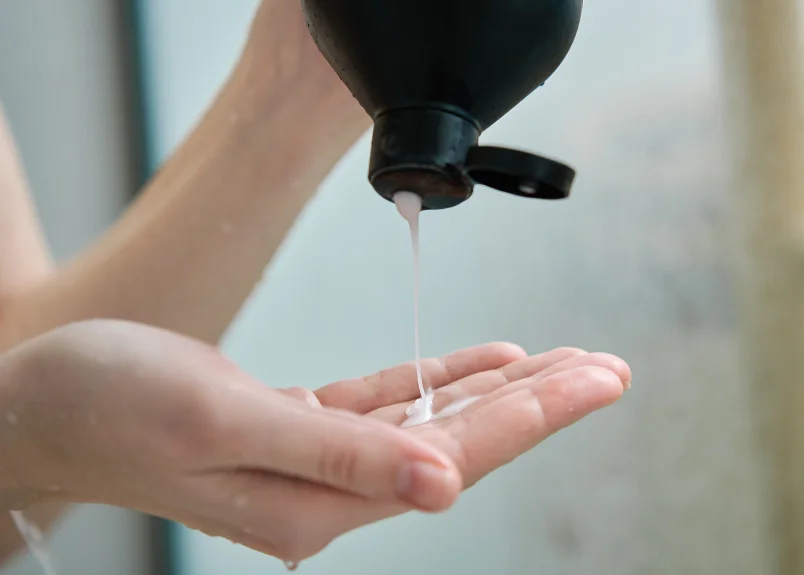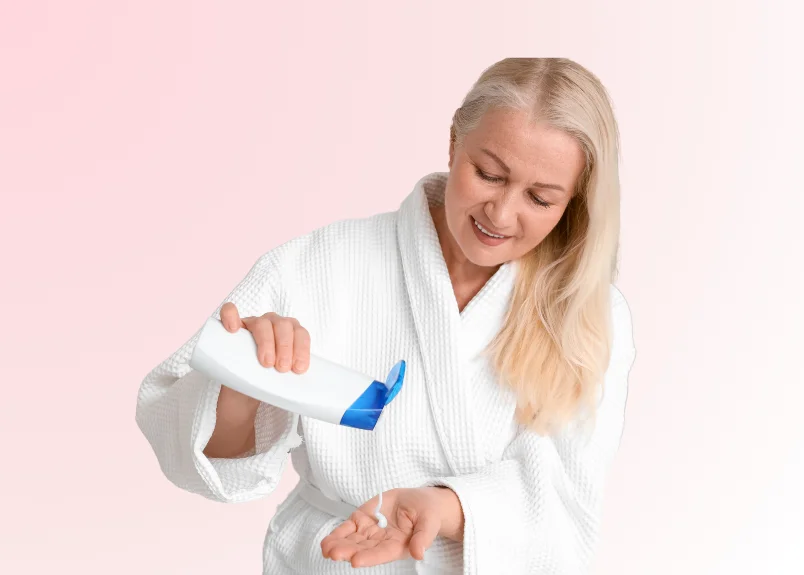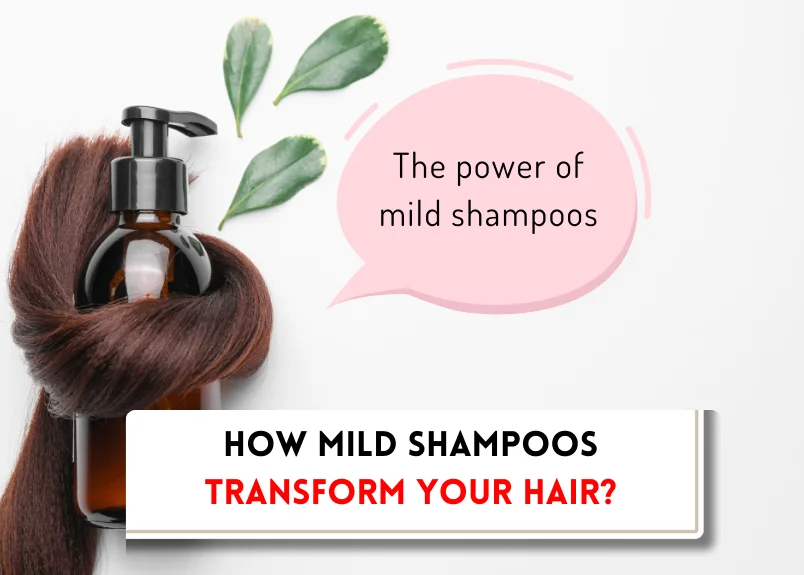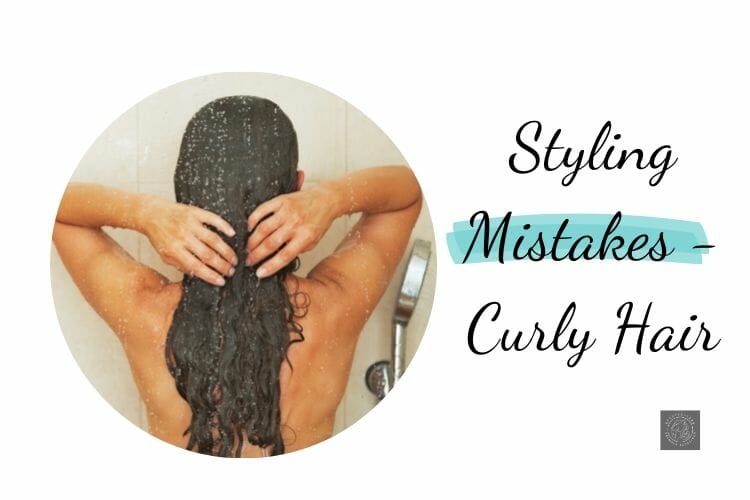How Much Shampoo Should I Use? Tips for Every Hair Type
At BeautyCaters, our expert team independently curates every recommended product. Purchases through our links may earn us a commission. Explore our transparent selection process.
Shampoo is one such essential without which hair care is simply incomplete. But, do you know too much or too little shampoo is actually harmful? Lathering up with too much shampoo can leave your hair feeling stripped and lifeless, while skimping can mean missing out on a proper clean.
Now you must be wondering then how much shampoo should I use? That’s what this block post is all about. I will tell you the secret of the mystery – how much shampoo is just right for your beautiful locks.

Why too much shampoo is harmful?
While a luxurious lather might feel satisfying, overdoing it with shampoo can have unintended consequences for your hair’s health. Many shampoos contain surfactants, and cleansing agents that can be effective but also potentially harsh. Excessive use of these detergents can strip away the scalp’s natural oils, compromising its protective barrier. This dryness can manifest as scalp irritation, increased susceptibility to breakage, and even hair loss over time. Furthermore, it leaves hair vulnerable to environmental aggressors like UV rays and harsh styling tools.
Individuals with sensitive scalps are particularly at risk. The overload of chemicals and ingredients present in excessive shampoo use can trigger allergic reactions or irritation, leading to itching, redness, and even rashes.
Therefore, it’s crucial to adopt a balanced approach to shampooing for maintaining healthy, vibrant locks.
How much shampoo should I use?
Several factors come into play in determining the amount of shampoo usage. Understanding them helps optimize your shampooing routine for the best possible results.
Assess your hair type
The secret to using the right amount of shampoo hinges on understanding your unique hair type! Oily hair craves a targeted cleansing approach, while dry or damaged strands need a gentle, hydrating touch. Let’s delve deeper into how hair type influences your ideal shampoo dosage.
Hair types and shampoo quantity
Every hair types have varying needs and require different amounts of shampoo to achieve optimal results. This section explores the crucial role of hair type (oily, dry, etc.) in determining the optimal amount of shampoo for effective cleansing and hair health.
- Oily Hair: If you have oily hair, you may need to use a little extra shampoo to thoroughly cleanse your scalp and remove excess oil.
- Dry Hair: On dry hair, you might want to use a gentle shampoo and avoid using too much product to prevent further drying.
- Color-Treated Hair: Color-treated hair requires special care. It is recommended to use shampoos specifically formulated for colored hair and follow the instructions provided by your hairstylist or the shampoo manufacturer.
- Chemically Treated Hair: If you have chemically treated hair, such as permed or relaxed hair, it’s crucial to choose shampoos suitable for such hair types. These shampoos often have specific guidelines on the label that you should adhere to.
Hair texture and length
Your hair texture and length play a crucial role in determining the amount of shampoo you should use. If you have thick, long hair, you may require more shampoo compared to someone with fine, short hair. Additionally, different textures, such as curly, straight, or wavy hair, may impact how much shampoo your hair needs.
This section explores the crucial role of hair texture and length in determining the optimal amount of shampoo for effective cleansing and hair health.
- Fine or Thin Hair: Since fine or thin hair is more prone to getting weighed down, you should use a small amount of shampoo, approximately the size of a dime. This will prevent your hair from becoming flat and lifeless.
- Normal or Medium Hair: If you have normal or medium hair, a quarter-sized amount of shampoo should suffice. This is enough to thoroughly cleanse your hair without overdoing it.
- Thick or Coarse Hair: Thick or coarse hair requires slightly more shampoo to thoroughly clean and nourish the strands. Start with a quarter-sized amount and adjust as needed, ensuring all your hair gets proper coverage.
- Curly or Textured Hair: Curly or textured hair tends to be drier and more prone to frizz. To keep your curls hydrated and defined, use a generous amount of shampoo, around the size of a silver dollar.
Concentration of product
Using the right amount of shampoo is essential for achieving desired results. Using too little may not effectively cleanse your hair, while using too much may lead to product buildup and weigh down your hair.
Shampoo dosage for different Hair:
- Fine/Thin Hair: A dime-sized amount of shampoo is ideal to prevent limp, weighed-down strands.
- Normal/Medium Hair: A quarter-sized amount provides sufficient cleansing without being excessive.
- Thick/Coarse Hair: Begin with a quarter-sized amount, adjusting as needed to ensure thorough cleansing of all hair.
- Curly/Textured Hair: A more generous application, around a silver dollar size, helps maintain hydration and curl definition.
- Oily Hair: Experiment with a slightly larger amount than usual to effectively remove excess oil buildup.
Remember, these are starting points. It’s important to be mindful of your hair’s response and adjust the dosage accordingly to achieve optimal results.
Water quality
The quality of the water you use can also impact shampoo efficiency. Hard water, which contains a higher concentration of minerals, can make it harder for shampoo to lather and rinse out properly.
Related: 5 alternatives to wash synthetic wig without wig shampoo
Tips for moderating shampoo use

To help you moderate your shampoo use and get the most out of your hair care routine, here are some handy tips:
- Start with a small amount: Begin with the minimum recommended amount for your hair type and adjust as needed. You can always add more if necessary, but using too much shampoo can be counterproductive.
- Focus on the scalp: When shampooing, pay extra attention to your scalp, as this is where the majority of oil and dirt tend to accumulate. Massage the shampoo gently into your scalp using your fingertips.
- Avoid overwashing: Unless you have extremely oily hair, washing your hair every day may be excessive. Overwashing can strip your hair of its natural oils, leaving it dry and brittle. Aim for washing every 2-3 days, or as needed.
- Condition properly: Conditioner is essential for maintaining healthy, moisturized hair. Use a small amount of conditioner after shampooing, focusing on the lengths and ends of your hair.
- Perceiving signs of imbalance: Pay attention to how your hair looks and feels after shampooing. If it appears dull, greasy, or dry, adjust your shampoo dosage accordingly to avoid any unwanted hair issues.
Does the type of shampoo affect how much to use?
Yes, beyond hair type, the specific shampoo formula plays a crucial role in determining the optimal dosage. Here’s a breakdown of common shampoo types and recommended usage:
- Regular Shampoo (Normal Hair): A nickel-sized amount is generally sufficient for people with normal hair, as it provides a good cleanse without being excessive.
- Color-Safe Shampoo (Treated Hair): Designed for gentle cleansing, these shampoos often require a similar nickel-sized amount, used 2-3 times a week to maintain color vibrancy.
- Moisturizing Shampoo (Dry/Damaged Hair): Combat dryness and frizz with a moisturizing shampoo. Depending on hair thickness, you might need a quarter-sized amount or more to ensure adequate hydration.
- Organic Shampoo (All Hair Types): These gentle formulas can be used similarly to regular shampoos, with a nickel-sized amount suitable for most.
- Anti-Dandruff Shampoo (Flaky Scalp): The amount depends on hair thickness and length. Typically, a quarter-sized amount used 2-3 times a week is recommended, or as directed by your doctor for specific concerns.
- Dry Shampoo (All Hair Types): This isn’t a replacement for regular shampoo but a refresher. Target the roots by spraying from 4 inches away, dividing hair sections for even coverage.
- Medicated Shampoo (Scalp Conditions): Dosage varies depending on the specific condition being treated. Always follow the instructions on the bottle carefully for optimal results.
How much shampoo is too much?
While hair length might seem like a factor, the true heroes for determining shampoo quantity are hair texture and density.
Fine hair thrives with a minimal amount, roughly the size of a five-pence piece. Thicker hair requires a bit more firepower, around two ten-pence pieces worth. Those with hair falling somewhere in between can find their happy medium with a ten-pence piece amount. Interestingly, curlier hair types might need slightly more shampoo to ensure proper cleansing.
Also, Lather isn’t the ultimate judge of cleanliness. If you find yourself reaching for more shampoo to create a bigger lather, it’s likely excess oil buildup hindering the process. The most effective solution? A thorough rinse after the first application, followed by a second application using the correct amount of shampoo. This two-step approach cleanses effectively without wasting product.
Misconceptions and mistakes in shampoo use
After years of using shampoo and researching its proper usage, I have come across some common misconceptions and mistakes that many people make. I debunk these myths and highlight the potential risks of using too much shampoo.
Busting Common myths about shampoo usage
While achieving clean, healthy hair is a universal goal, several misconceptions can lead to unintended consequences. Here, we debunk two prevalent myths surrounding shampoo usage:
- Myth #1: Abundant lather equals superior cleanliness: While a good lather can be visually satisfying, it doesn’t correlate directly with hair cleanliness. In fact, using an excessive amount of shampoo can strip your hair of its natural oils, leading to dryness, brittleness, and increased susceptibility to damage. Remember, a moderate amount of shampoo is often sufficient for effective cleansing.
- Myth #2: Daily hair washing is essential for hygiene: Frequent shampooing can disrupt your scalp’s natural oil production cycle. This can lead to an overproduction of sebum (oil) in an attempt to compensate for the removal. The result? Oily hair that seems to require even more frequent washing. In most cases, washing your hair every other day or even less frequently, depending on your hair type and activity level, is perfectly adequate for maintaining good hygiene and healthy hair.
Frequently Asked Questions (FAQs)
Do I need to shampoo twice (double shampoo)?
Yes, you must Double shampoo if you have product buildup or oily hair. The first wash removes dirt and products, while the second cleanses the scalp more thoroughly. However, it’s not always necessary for everyone.
How often should I shampoo for oily hair?
The American Academy of Dermatology Association (AADA) suggests daily shampooing for oily hair to manage excess oil production.
Can I dilute shampoo with water?
Yes, you can dilute your shampoo with water.
While diluting shampoo lacks scientific backing, some anecdotal evidence suggests it may offer benefits for certain hair types. If you have dry, damaged, or color-treated hair, you might find that diluting your shampoo with a small amount of water creates a gentler cleansing experience.
How much shampoo should I use for long hair?
Shampoo amount varies with hair length. Longer tresses may require 2-3 pumps, i.e., 3-4ml, for optimal cleansing.
How much shampoo should I use for short hair?
For short hair, a nickel-sized amount (approximately 0.5ml) of shampoo is sufficient for a thorough cleanse.
How much shampoo should I use for medium-length hair?
For medium to thick hair, a 1-2ml application, roughly the size of a walnut, is recommended for optimal lather and cleansing.

Final word: How much shampoo should I use?
Moving beyond the one-size-fits-all approach, this guide empowers you to determine the ideal shampoo dosage for your unique hair. By considering key factors like hair texture, density, scalp condition, and styling product use, you can establish a personalized cleansing routine. Remember, a generous lather doesn’t necessarily equate to superior cleanliness.
Focus on a targeted application to the scalp, and if necessary, follow with a second cleanse using the appropriate amount. By embracing this tailored approach, you’ll achieve optimal scalp health and promote the growth of strong, healthy, and radiant hair.










